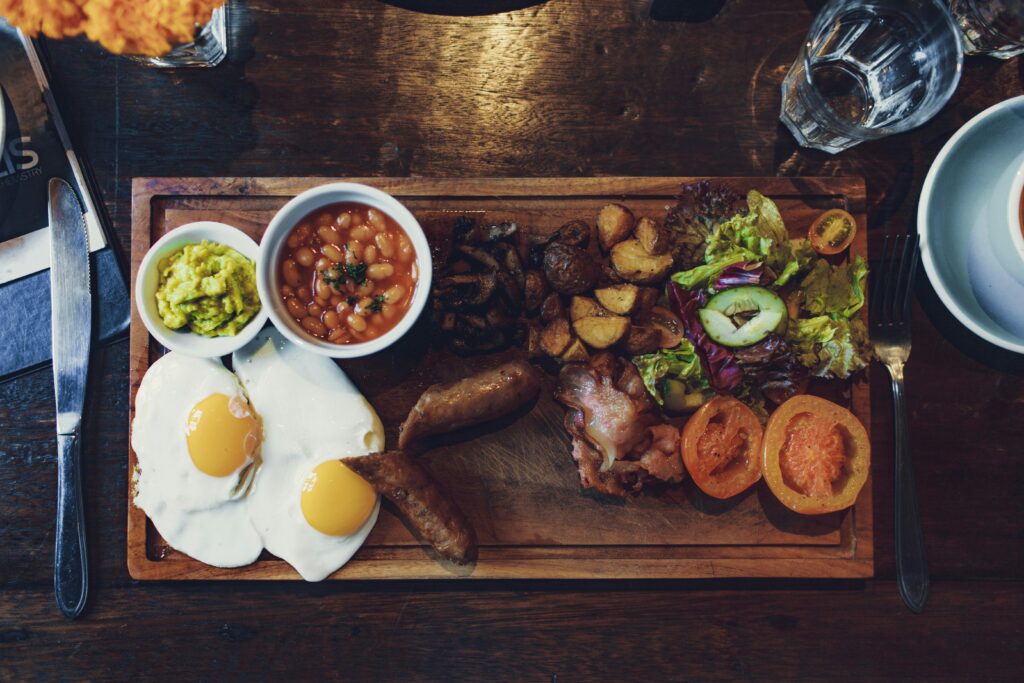5 Easy Ways to Boost Protein in Meals
For a meal to be balanced, you need protein in abundance. Protein is the glue holding you together, almost literally, and we need a good amount daily. Here are five easy ways to boost protein in meals.

Protein is one of the most important parts of a meal, and getting enough protein is key to health. Keep reading to find out the importance of protein for our health and how to increase protein in meals with ease today!
Importance of Protein
So, you know when I called protein glue? That’s not far off. Protein is a complex molecule that is composed of amino acids. Protein is vital for the body to function properly since it is the base of body structures, such as joints, skin, and hair. It’s also part of the cell wall, which holds your cells together. Plus, many biological reactions in the body rely on proteins, such as enzyme reactions, the immune system, antibody creation, and more.
Protein in the body is even responsible for metabolic reactions, DNA reproduction, cell repair, nutrient transportation, and much more. Our body needs protein daily, particularly when we are working out and actively using our muscles. Protein and its amino acids are used to repair the body after exercise, so it’s important to eat enough protein daily.
Exactly How Much Protein Though?
How much protein do you need? Well, here is a full guide, but in essence, you need about 0.7 to 1.5 g of protein per kilogram of body weight. So, if you know your weight in pounds, divide that number by 2.2 to get your weight in kilograms. Then multiply your kilograms by the amount of protein you want to consume daily. If you weigh 150 lb, that would be 68 kg. If you multiply that by 0.7, that would be about 48 grams of protein a day. If you work out often or aim to gain muscle mass, then you should shoot for a higher amount of protein per day. Some people even go higher than 2 grams of protein per weight in kilogram. Every body is different and our needs must adjust.
5 Easy Ways to Boost Protein in Meals
Here are easy ways to boost protein in meals. Not only does a protein-packed meal keep you full for longer, but it also has many benefits for our metabolic health and overall wellness. Try out these tips and get those gains!
1. Use Cottage Cheese
You know all those cottage cheese hacks where they just add cottage cheese to everything? Delicious. Cottage cheese is a very versatile ingredient that can be made sweet or savory and easily boosts the protein levels of any meal. Some recipes involve blending cottage cheese with sweetener and making an ice cream. Spoiler alert, it does not taste like ice cream, but it’s pretty good and high in protein. Others add cottage cheese to scrambled eggs. This hack makes the eggs fluffy and cheesy. The only con is that cottage cheese doesn’t really add anything flavor-wise. However, cottage cheese is an easy way to boost the protein level of meals seamlessly. Add cottage cheese on top of toast and sprinkle some honey on it for a delicious and filling snack. No matter how you use cottage cheese, know that it is adding essential amino acids to your diet.
2. Sneak in Collagen Powder
Collagen powder is an amazing way to boost the protein levels of meals easily. This is because it can be bought in a flavorless form. A couple of scoops of collagen have many grams of protein, containing all essential amino acids as well. It can be used in soups, desserts, pasta, smoothies, and more. Collagen powder tends to be easy to digest and dissolves quickly. It is a good option for people who have a milk allergy since protein powder with whey contains lactose. Collagen powder can come from animal or marine sources as well, making it an option for individuals who are pescatarian. Use collagen powder in almost any meal to boost health with ease.
3. Make More Jello
Jello is an underrated snack. Many think it’s boring but it can be so delicious if we just put in a tiny bit of effort. Make jello better by adding flavors and fruit. Add chopped-up blueberries, mangoes, and strawberries, and make it a fruit salad. Make protein-packed jello by using ingredients such as milk and collagen powder. This will make a Jello that is sweet, satisfying, and filling. If you’re vegan and want to avoid gelatin, you can also use agar powder to solidify a liquid and make jello. Use plant-based milk like soy milk in order to get more protein in your jello as well.
4. Utilized Greek Yogurt
I used to say that I couldn’t live without sour cream, but that was before I met Greek yogurt. Greek yogurt is delicious and a great substitute in meals where you want to avoid using something like heavy cream but still make the meal creamy and enjoyable. Greek yogurt tastes delicious, is super creamy, and is gut-healthy. Greek yogurt tends to contain live cultures, which are probiotic bacteria that help support our gut health. Greek yogurt is also very high in protein, making it an easy way to increase the protein level of meals. Instead of using sour cream, try Greek yogurt! If a recipe calls for heavy cream or milk. use Greek yogurt instead.
5. High Protein Substitution
Along the same vein, here’s a final tip to boost protein in meals. All you have to look for is high protein substitutes. For example, while regular whole-grain pasta tastes delicious, there are many high-protein substitutions you can find and eat instead. Look for red lentil pasta, one of my personal favorites. The taste is basically the same, but it has much more protein per serving than a normal portion of pasta. Look for desserts with Greek yogurt instead of whipped cream to increase protein in your sweet treat as well. You can still enjoy the original from time to time, but look for these high-protein swaps if you want to increase protein on a day-to-day basis.
Bonus Tip: Complete vs Incomplete
Here’s a bonus tip that will help you make sure you are getting enough of the right types of protein daily. It’s not enough to just eat protein, you need to eat protein that contains all of the amino acids. Our body can make 11 amino acids on its own, but there are still nine other amino acids that are vital called essential amino acids. These are absorbed through the food we eat.
Protein is called incomplete protein if it does not contain all of the essential amino acids. Examples of incomplete protein include nuts, seeds, whole grains, vegetables, and legumes such as peas, beans, and lentils. Complete proteins have all nine essential amino acids. These include fish, poultry, dairy products, eggs, beef, pork, and soy products such as edamame, tempeh, and tofu.
Make sure you are getting all the amino acids you need. There’s no need to avoid incomplete proteins, as you can just stack them up together to make a complete protein meal. You can pair nuts, beans, and vegetables such as squash, and still create a meal that is full of the nine essential amino acids.
The Takeaway
Protein is pretty important and we should be eating it daily. We need to consume high-quality protein in order to fuel our bodies correctly. When we are trying to hit higher protein daily, it gets challenging. Use these hacks to boost the protein content of meals easily.
Remember that health comes from within. Eat nutrient-dense meals, exercise when you can, at least 3 times a week, and take care of your mental health. Daily habits become the building blocks for emotional, mental, and physical health. Take care of your gut health too! Learn everything you need to know about gut microbiota today for free here.





